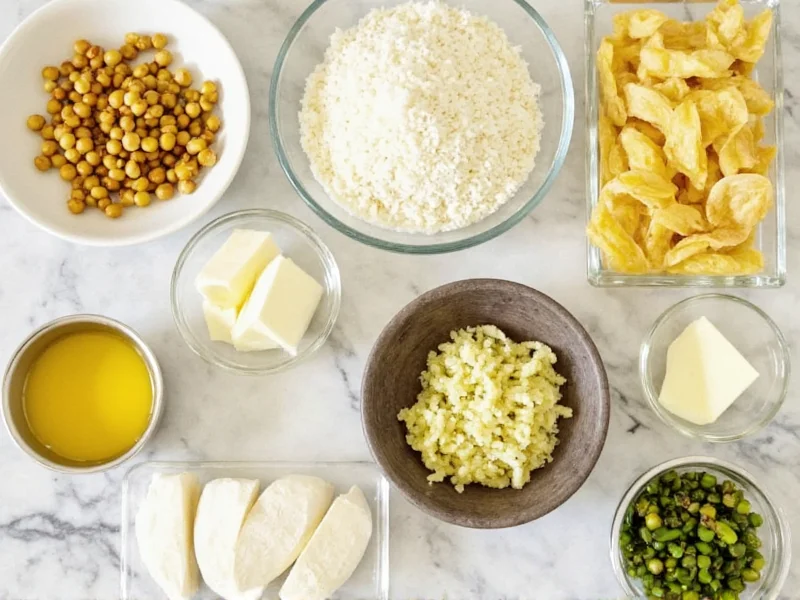The essential egusi soup ingredients include egusi melon seeds, palm oil, assorted meats (beef, goat, or chicken), dried fish, crayfish, onions, peppers (scotch bonnet or bell peppers), leafy vegetables (ugu or bitter leaf), stockfish, locust beans (iru), and traditional seasonings. Authentic Nigerian egusi soup requires properly ground egusi seeds as the foundation, combined with protein sources and aromatic vegetables for the distinctive rich, nutty flavor that defines this West African staple dish.
Understanding Egusi Soup: A Culinary Treasure of West Africa
Egusi soup represents one of Nigeria's most beloved traditional dishes, with roots extending across West African cuisine. This hearty soup features a thick, nutty base created from ground melon seeds, offering both nutritional value and distinctive flavor. The dish varies significantly by region and household, but certain core egusi soup ingredients remain consistent across authentic preparations.Core Egusi Soup Ingredients Explained
Egusi Seeds: The Foundation
Egusi seeds, technically from the Citrullus lanatus plant (related to watermelon), form the essential base of this soup. These white, oval-shaped seeds must be dried and ground into a fine powder. When cooked with palm oil, they create the soup's signature thick, rich texture. Finding quality egusi seeds is crucial—look for uniformly white seeds without dark spots, indicating proper drying. Many African grocery stores carry pre-ground egusi, but freshly ground seeds yield superior flavor and texture.Protein Components
Traditional egusi soup incorporates multiple protein sources:- Assorted Meats: Beef, goat meat, or chicken, typically using tougher cuts that benefit from slow cooking
- Dried Fish: Smoked or dried varieties that add depth of flavor
- Stockfish: Adds umami complexity (soak overnight before use)
- Crayfish: Ground dried shrimp that enhances the soup's savory profile
Vegetables and Seasonings
The aromatic foundation of egusi soup comes from carefully balanced vegetables and spices:- Palm Oil: Provides the characteristic red color and earthy flavor
- Onions: Both in the base and as finishing garnish
- Peppers: Scotch bonnet for heat or bell peppers for milder versions
- Locust Beans (Iru/Dawadawa): Fermented condiment adding umami
- Leafy Greens: Ugu (pumpkin leaves) or bitter leaf for texture and nutrition
- Seasoning Cubes: Traditional Maggi or Knorr cubes for balanced flavor
| Ingredient | Standard Measurement | Notes |
|---|---|---|
| Egusi seeds (ground) | 1 cup | Freshly ground yields best texture |
| Palm oil | 1/2 cup | Unrefined for authentic flavor |
| Assorted meats | 500g | Pre-cooked and seasoned |
| Dried fish | 100g | Soaked and cleaned |
| Crayfish | 2 tbsp | Freshly ground preferred |
| Peppers | 3-4 | Adjust for heat preference |
| Onions | 2 medium | 1 for base, 1 for garnish |
| Leafy vegetables | 2 cups | Added at the end of cooking |
Regional Variations in Egusi Soup Ingredients
While the core egusi soup ingredients remain consistent, regional adaptations create distinctive versions across West Africa:- Nigerian Egusi: Typically includes bitter leaf and uses a combination of meats with strong palm oil presence
- Ghanaian Hwanso: Often incorporates ground peanuts alongside egusi for added richness
- Benin Variation: May include okra for additional thickening
- Vegetarian Egusi Soup: Substitutes meats with mushrooms and additional beans
Ingredient Substitutions for Authentic Egusi Soup
Finding authentic egusi soup ingredients can be challenging outside West Africa. Consider these practical substitutions:- Egusi Seeds: Sunflower seeds or pumpkin seeds (though flavor differs significantly)
- Palm Oil: Red palm fruit oil (not palm kernel oil) or a combination of vegetable oil with tomato paste
- Locust Beans (Iru): Shrimp paste or miso paste for umami depth
- Bitter Leaf: Spinach or kale with a squeeze of lemon juice
- Stockfish: Additional dried shrimp or smoked turkey necks
Common Mistakes with Egusi Soup Ingredients
Many home cooks encounter issues with egusi soup due to ingredient handling:- Using pre-ground egusi that's too fine: Creates a pasty texture rather than the desired grainy consistency
- Adding egusi directly to hot oil: Causes clumping—always mix with cold water first
- Overcooking leafy vegetables: Adds bitterness—stir in greens during the last 5 minutes
- Insufficient protein variety: Authentic flavor comes from multiple meat sources
- Skipping the palm oil bloom: Properly heating palm oil before adding other ingredients develops flavor
Where to Source Authentic Egusi Soup Ingredients
For the most authentic experience, seek out these ingredients through:- African specialty grocery stores (particularly Nigerian, Ghanaian, or West African markets)
- Online African food retailers that specialize in West African ingredients
- Farmers markets in areas with significant West African communities
- Some larger international supermarkets with robust ethnic food sections
Perfecting Your Egusi Soup Technique
The magic of egusi soup happens through proper technique with the right ingredients:- Start by properly blooming palm oil with onions and peppers
- Mix ground egusi with cold water to create a smooth paste before adding
- Add egusi paste gradually to prevent clumping
- Allow proper cooking time for flavors to meld (at least 20 minutes after adding egusi)
- Add leafy greens at the very end to preserve texture and color











 浙公网安备
33010002000092号
浙公网安备
33010002000092号 浙B2-20120091-4
浙B2-20120091-4